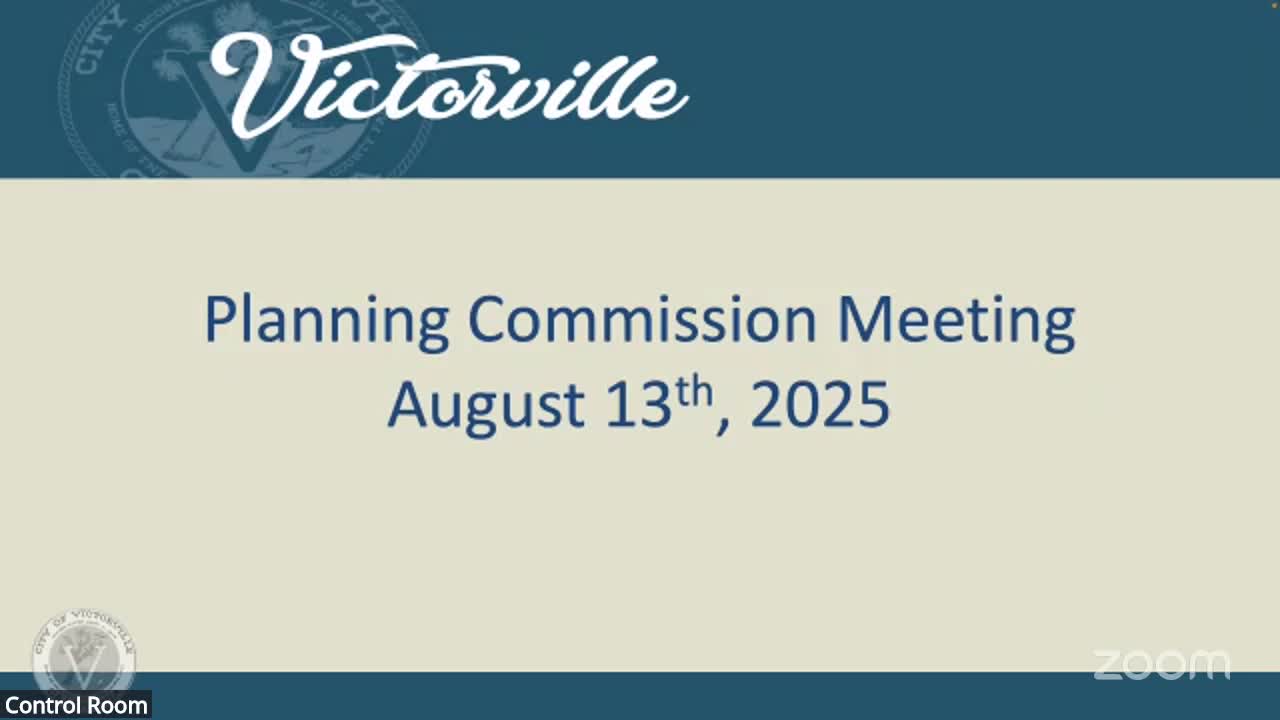Victorville Planning Commission considers vinyl fencing pilot program to enhance housing affordability
July 31, 2025 | Victorville City, San Bernardino County, California
This article was created by AI summarizing key points discussed. AI makes mistakes, so for full details and context, please refer to the video of the full meeting. Please report any errors so we can fix them. Report an error »

In the heart of Victorville's city hall, a pivotal discussion unfolded during the Planning Commission Regular Meeting on August 13, 2025. The air was charged with anticipation as local builders and industry experts gathered to advocate for a significant shift in residential fencing regulations. Their proposal? A 24-month pilot program to allow the limited use of vinyl fencing in new home developments, specifically for side and rear yards.
The advocates emphasized that this change would not replace traditional block walls, which would still be required for street-facing and front yard boundaries. Instead, they argued that introducing vinyl fencing could enhance flexibility and modernize community aesthetics while maintaining design standards. The proposed vinyl product boasts impressive features, including steel reinforcement, concrete footings, and the ability to withstand wind speeds exceeding 100 miles per hour. With a 20-year warranty and low maintenance requirements, the vinyl fencing promises long-term durability and visual appeal.
Carlos, a representative from the building community, highlighted the financial implications of this proposal. By allowing vinyl fencing, builders could save between $6,000 to $13,000 per home, savings that could be redirected to improve affordability for prospective homeowners. "Every dollar matters when families are trying to achieve homeownership," he stated, underscoring the urgency of addressing the housing affordability crisis in California.
Jennifer, another speaker, reinforced the reliability of vinyl fencing, citing over 25 years of successful installations in various communities, including high-value neighborhoods. She noted that the enhanced vinyl product has been engineered specifically for the Victorville market, ensuring it meets local conditions and standards.
The discussion also touched on the broader context of housing affordability in California, where the average home price has soared to around $500,000. Builders are increasingly facing challenges in keeping homes accessible to families. The proposed pilot program aims to demonstrate that vinyl fencing can be a viable alternative, potentially easing some of the financial burdens on homebuyers.
As the meeting progressed, the speakers collectively urged the Planning Commission to consider their proposal for the September agenda. They expressed hope for a tour of the vinyl fencing product to facilitate a more informed discussion among commissioners and staff.
With the stakes high and the community's future in mind, the advocates left the meeting with a sense of optimism, eager to see how this innovative approach could reshape residential development in Victorville. The outcome of this proposal could not only influence local building practices but also play a crucial role in making homeownership more attainable for families in the region.
The advocates emphasized that this change would not replace traditional block walls, which would still be required for street-facing and front yard boundaries. Instead, they argued that introducing vinyl fencing could enhance flexibility and modernize community aesthetics while maintaining design standards. The proposed vinyl product boasts impressive features, including steel reinforcement, concrete footings, and the ability to withstand wind speeds exceeding 100 miles per hour. With a 20-year warranty and low maintenance requirements, the vinyl fencing promises long-term durability and visual appeal.
Carlos, a representative from the building community, highlighted the financial implications of this proposal. By allowing vinyl fencing, builders could save between $6,000 to $13,000 per home, savings that could be redirected to improve affordability for prospective homeowners. "Every dollar matters when families are trying to achieve homeownership," he stated, underscoring the urgency of addressing the housing affordability crisis in California.
Jennifer, another speaker, reinforced the reliability of vinyl fencing, citing over 25 years of successful installations in various communities, including high-value neighborhoods. She noted that the enhanced vinyl product has been engineered specifically for the Victorville market, ensuring it meets local conditions and standards.
The discussion also touched on the broader context of housing affordability in California, where the average home price has soared to around $500,000. Builders are increasingly facing challenges in keeping homes accessible to families. The proposed pilot program aims to demonstrate that vinyl fencing can be a viable alternative, potentially easing some of the financial burdens on homebuyers.
As the meeting progressed, the speakers collectively urged the Planning Commission to consider their proposal for the September agenda. They expressed hope for a tour of the vinyl fencing product to facilitate a more informed discussion among commissioners and staff.
With the stakes high and the community's future in mind, the advocates left the meeting with a sense of optimism, eager to see how this innovative approach could reshape residential development in Victorville. The outcome of this proposal could not only influence local building practices but also play a crucial role in making homeownership more attainable for families in the region.
View full meeting
This article is based on a recent meeting—watch the full video and explore the complete transcript for deeper insights into the discussion.
View full meeting
